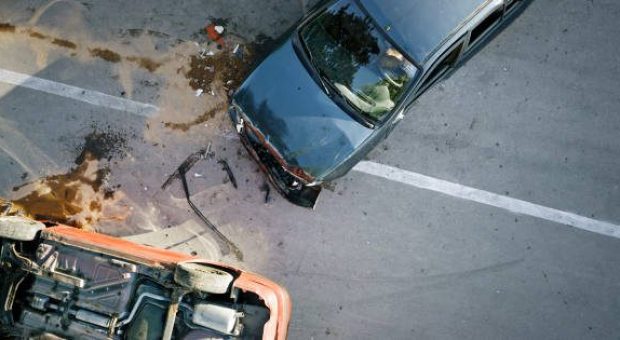- Personal Injury Claims
- Accidents
- Road Traffic Accident Claims
- Accidents At Work Claims
- Holiday Accidents and Illnesses Abroad Claims
- Fatal Accident Claims
- Accidents Public Place Claims
- Injuries
- Eye Injury Compensation Claims
- Poisoning Claims
- Serious Injury Claims
- Sports Injury Claims
- Upper Body Injuries Claims
- Arm and Elbow Injury Compensation Claims
- Hand Injury Claims
- Chest Injury Compensation Claims
- Neck Injury Compensation Claims
- Collarbone Injury Compensation Claims
- Cheekbone Injury Compensation Claims
- Eye Injury Claims
- Shoulder Injury Claims
- Fractured Sternum Compensation Claims
- Spinal Injuries Claims
- Brain Injury Compensation Solicitors
- Compensation for Scarring Claims
- Dislocated Injury Compensation
- Amputation Claims
- Dental Claims
- Horse Riding Accident Compensation
- Personal Injury Lower Body Injuries
- Asbestos Lawyers
- Abuse Lawyers
- Other Injury Claims
- Disputes
- Alternative Dispute Resolution
- General Disputes
- Litigation
- Defamation
- Litigation Funding
- Other Dispute Resolution Services
- Court Actions
- Professional Negligence
- Professional Negligence Claims Against Surveyors
- Professional Negligence Claims Against Architects
- Professional Negligence Claims Against Accountants
- Professional Negligence Claims Against Solicitors
- Professional Negligence Claims Against Financial Advisers IFAS
- Professional Negligence Claims Against Banks
- Clinical Negligence Claims
- Group Actions
- Property & Conveyancing
- Conveyancing Services – Scotland
- Commercial Property Services – Scotland
- Other Property Services Scotland
-
- Family Law
- Immigration Services
- Visas
- Adult Naturalisation Application
- Child Registration Application
- Private Life Application for Adults
- Private Life Application for Children
- Long Residence Application
- Surinder Singh
- Administrative Review
- Fresh Claims for Asylum
- Naturalisation Application
- Stateless Persons
- Travel Documents
- Pre Action Protocol Letter
- Judicial Review
- Immigration Application Review
- Brexit Immigration Advice: Services in Scotland
- Business Immigration
-
- Wills,Trusts & Estates
- Probate & Executry Services
- Business Services
- Careers
Turning back the Clock on Historical Child Sexual Abuse: A Helpful Guide for Victims of Historical Abuse
September 10, 2019 General
Child sexual abuse occurs when a child is persuaded or forced into participating in sexual activities. Child sexual abuse can take many forms however it can be divided into two broad categories – contact and non- contact abuse. Victims may suffer both types of abuse and both are equally traumatic and damaging for the victim and may give rise to a claim.
Contact abuse involves abuse where the perpetrator physically touches a child. Non-contact abuse includes activities where there is no physical element, such as child grooming and forcing a child to watch sexual acts. This also includes situations where the perpetrator makes contact with the child over the internet in order to carry out the abusive acts.
For victims of historical child sexual abuse time is often not the healer the old adage promises it to be and it can be difficult to know where to turn for support and closure. Such abuse can have serious long-term effects, whether physical, psychological or financial, and as a victim you may be entitled to make a claim for compensation.
Recently, the law has changed to provide victims of historical child sexual abuse with a better chance of obtaining the justice and closure they need after many years of suffering. For many years, victims of abuse have lost their chance of reparation due to restrictive time limits and legal intricacies. However, now the law has been reformed to give victims a better chance.
Previously, time limits often prevented victims of historical sexual abuse from even getting their case off the ground. However, now new legislation has loosened time restrictions for claims for compensation resulting from childhood abuse.
Previously, claims were limited by what is known as a three year time bar. This meant that victims of abuse had to bring a claim for compensation within 3 years of the abuse occurring or if it occurred over a period of time, 3 years from when the abuse stopped. For victims of childhood abuse which occurred when the child was under 16, the law gave some protection by preventing the three year period from starting until the child turned 16. This meant that victims of childhood abuse had to bring a claim within 3 years of turning 16.
However, this protection did not go far enough. Child abuse has serious effects on the lives of victims, and it can take many years for victims to process what happened to them before reaching the position of feeling ready to bring legal action. In fact, statistics show that female victims often do not talk about their abuse until 18 years after it occurred and for male victims it can be as long as 25 years before they feel able to tell someone about their abuse.
Now, thanks to the Limitation (Childhood Abuse) (Scotland) Act 2017, in many scenarios these restrictive time limits have been abolished and in turn this has given victims a better prospect of success. The time bar no longer applies where a claim for compensation is brought by the victim and relates to injury suffered as a result of child abuse which occurred when the victim was under 18. Abuse includes sexual abuse as well as physical abuse, emotional abuse and neglect.
Many claims for compensation for childhood sex abuse arise from scenarios where children have faced abuse when in the care of organisations, such as schools, church authorities, youth organisations, local authorities and foster care. Often, in such situations the organisation the abuser is associated with has greater financial resources and therefore it is better to sue the organisation rather than the abuser as an individual. This can also be useful where the abuser has died, and their estate has already been distributed.
Organisations can be held liable for child sexual abuse where the abuser is linked to the organisation and it was the organisation that created the opportunity for the abuse to be perpetrated. This is known as ‘vicarious liability’. Usually the situation where this comes into play is where the abuser is employed by the organisation. However, as many victims are aware, organisations can allow for abuse to occur even where the abuser is not employed by them. Recently, the Court has expanded this area and has made prospects of success better for victims where there is no employment relationship between the organisation and the abuser. In the case of , the court established that local authorities can be held liable for child abuse perpetrated by foster parents whom the local authority has appointed. As a result, victims now have a greater chance of success in bringing cases against voluntary organisations and local authorities.
Many claims for compensation for childhood sex abuse arise from scenarios where children have faced abuse when in the care of organisations, such as schools, church authorities, youth organisations, local authorities and foster care. Often, in such situations the organisation the abuser is associated with has greater financial resources and therefore it is better to sue the organisation rather than the abuser as an individual. This can also be useful where the abuser has died, and their estate has already been distributed.
Organisations can be held liable for child sexual abuse where the abuser is linked to the organisation and it was the organisation that created the opportunity for the abuse to be perpetrated. This is known as ‘vicarious liability’. Usually the situation where this comes into play is where the abuser is employed by the organisation. However, as many victims are aware, organisations can allow for abuse to occur even where the abuser is not employed by them. Recently, the Court has expanded this area and has made prospects of success better for victims where there is no employment relationship between the organisation and the abuser. In the case of , the court established that local authorities can be held liable for child abuse perpetrated by foster parents whom the local authority has appointed. As a result, victims now have a greater chance of success in bringing cases against voluntary organisations and local authorities.
If you would like more information then speak to our today.
A claim can still be brought even if the perpetrator is now dead as long as their estate has not already been distributed. Compensation would be paid from the deceased perpetrator’s estate.
However, if the estate has already been distributed you may still have a claim if the perpetrator carried out the abuse as a member of an organisation, for example a teacher in a school or a leader of a youth organisation. This is explained in more detail above.
If you have previously raised a claim in relation to abuse and have received compensation, you cannot go to court again seeking more compensation. However, if you lost your earlier claim then you can re-raise the case.
Abusers can try to have the case against them dismissed under the new legislation by arguing that the circumstances would result in the hearing being unfair for the abuser. This is because they have a right to a fair hearing. The decision on this lies with the Court.
Contact Us
Speak to one of our experience legal team, and get responsive, clear, and straightforward legal advice and support.
















